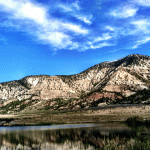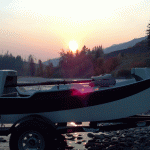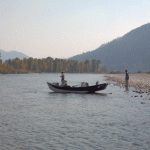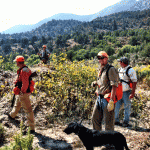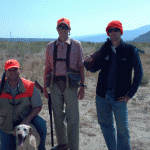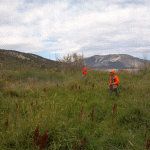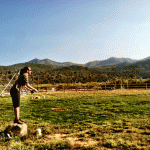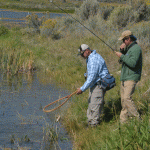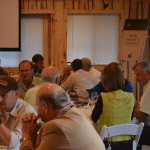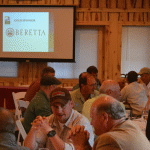This Sunday, Sept. 16, Dave White and Dan Ashe, the heads of the federal Natural Resources Conservation Service and the Fish and Wildlife Service, respectively, attended the TRCP’s annual Western Media Summit and briefed participants about a groundbreaking species conservation plan that was formally unveiled this week.
In summary, the plan provides long-term (up to 30 years) regulatory predictability to farmers, ranchers and forest landowners participating in USDA’s Working Lands for Wildlife initiative. Under the agreement, participants voluntarily implement proven conservation practices designed to protect fish and wildlife habitat, including habitat for several at-risk species and vulnerable game species on private lands. The plan initially identifies seven species, including sage grouse and lesser prairie chicken, as targets.
What makes the agreement unique? First of all, it recognizes that species conservation works best when private landowners are active partners in the process. To make this happen, the agreement recognizes that (a) funds must be made available to help implement important projects and (b) landowners must have assurance that the government won’t keep moving the goal line.
Certainty is key. If a landowner undertakes conservation projects that work and a listed species moves onto his or her lands, or if a resident non-listed species like sage grouse becomes listed under the Endangered Species Act, he or she must be confident that these lands won’t suddenly be subject to new land use restrictions or penalties.
Such “safe harbor” agreements are not unique – they have become a tried and true part of implementing the Endangered Species Act on private lands. What is unique about the new plan is its duration and scope.
For example, sage grouse habitat runs from Northern California east to South Dakota and from Canada south to southern Colorado. Second, 30 years is a long time, allowing landowners to make long-term decisions about managing their lands. Finally, the NRCS allocated $33 million in its 2012 budget for the WLFW initiative (the funds will go to private landowners to implement agreed-upon projects), so this is not just another empty federal program with no funding to back it up.
Yes, some questions remain. Does the agency or agencies have the resources to monitor implementation over time, especially as their budgets are likely to be shaved when and if Congress ever gets serious about deficit reduction? Will future administrations share this commitment to cooperative private land conservation? And while $33 million is a good start, it’s only a fraction of what will be needed long term to conserve wildlife species that are sensitive to management practices on private on private lands. But it takes a step toward addressing a huge problem.
Why should sportsmen care? First, the seven species listed in the agreement are surrogates for many other species. Protecting and restoring sage grouse directly benefits mule deer and pronghorn, which share the same habitats.
Second, about half of all Americans hunt only on private lands. It’s in everyone’s interest to make sure these lands are as healthy and productive for fish and wildlife as possible – and that landowners have the resources and long-term regulatory certainty to keep farms and ranches together and working
Finally, in-your-face fights about endangered species, from wolves to spotted owls, help no one. They divide and breed resentment from private landowners about the federal government and conservation.
Expect to hear carping from extremists on both sides about this either being a new intrusion of the federal government into the lives of private landowners or an abdication of federal regulatory authority. Ignore such rhetoric. These parties have made a living feeding the flames of paranoia and sowing dissent and seem to care far more about keeping fights alive than recovering species.
The bottom line: the new agreement is a common-sense and innovative step forward that explicitly recognizes the important role of private landowners in species conservation. Secretaries Vilsack and Salazar should be commended.

